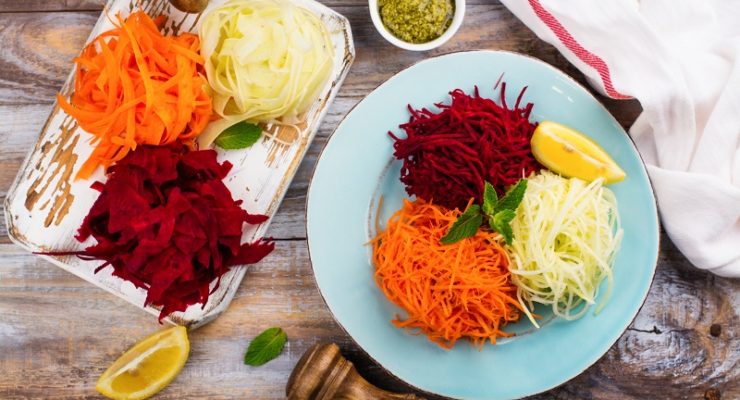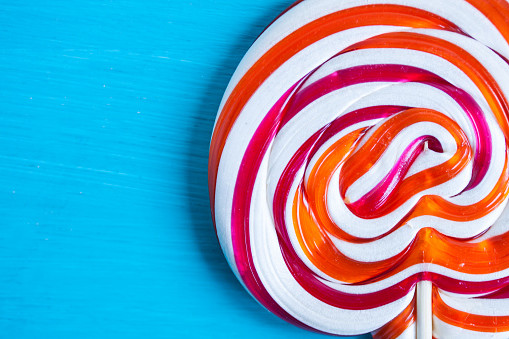Making a diet change and eating less carbs can seem a little intimidating–especially if you can’t imagine passing on the bread basket while dining out or skipping Sunday spaghetti dinners with the family. The reality is, following a low carb lifestyle doesn’t have to be hard. Sure, there’s a bit of an adjustment period with any diet or lifestyle change. The trick is to set yourself up for success without being too hard on yourself.
If you’re trying to eat less carbs, we’re here to give you some tips so that you can be mindful of the foods that you incorporate. Stay aware of the ingredients that you consume while trying to make healthy swaps that will reduce your carb intake. If you do want to enjoy some carbs, we advise choosing healthier carbs in moderation that are high in fiber and nutrients yet low in sugar. Select quality carbohydrates while also trying to lower the total amount of carbs that you eat. Keep reading for our suggestions on following a low carb lifestyle.
Here are 10 tips to help you transition to a low carb diet:
1. Get familiar with low carb foods.

The first and most important step in following a low carb diet is to understand which foods are lower in carbs. This will help you create your grocery list and map out meals without worry.
According to Healthline, these foods tend to be low carb:
- Leafy green vegetables – spinach, kale, arugula, Swiss chard
- Non-starchy vegetables – cauliflower, asparagus, broccoli, onions, Brussels Sprouts, cucumber, mushrooms, green beans celery, bell peppers, cabbage, zucchini
- Lean cuts of meat and poultry – chicken breast, turkey breast, lean beef, sirloin, pork tenderloin
- Fish and seafood – salmon, tuna, halibut, trout, shellfish, shrimp, lobster
- Soy – tofu, tempeh, edamame
- Nuts and nut butters – almonds, cashews, walnuts, pistachios, peanuts
- Seeds – sunflower, chia, pumpkin, flax
- Oils – olive, avocado, flax, sunflower, grapeseed
- Eggs and unsweetened dairy products – low-fat milk, cottage cheese and yogurt
Fruits are also a topic of concern with lower carb diets. If you are craving some fresh fruit, keep it limited and choose varieties that are higher in fiber yet lower in sugar. Berries, such as blueberries, strawberries, raspberries or blackberries are the best option. Be sure to also consume whole fruits with the skin and peel on for more fiber. Avoid canned fruit in syrup or juice and limit drinking 100% fruit juice. Other lower carb fruits include tomatoes, avocados, olives,
2. Find low carb substitutes.

Following a lower carb meal plan doesn’t mean that you have to forego your favorite carb-heavy dishes. It just means that you must find substitutes for those higher carb ingredients.
If pasta is your weakness, try using spaghetti squash or zucchini noodles instead. If rice is a staple in your house, cauliflower rice makes a great low carb replacement. Most grocery stores now offer all of these options in “heat and eat” frozen bags, or you can make your own using a food processor. You can also substitute SmartCarbs that are higher in fiber, such as beans, legumes, lentils, quinoa and other ancient grains.
Cauliflower can also be mashed and used in place of potatoes. Portobello mushrooms make a great sub for burger buns. Lettuce or cabbage leaves are low carb alternatives to wraps. Craving chips? Try kale chips or Brussels sprout chips. Need to satisfy a fry fix? Try a veggie fry recipe.
3. Don’t be afraid of fat.

Whereas carbohydrates and protein both deliver four calories per gram, fats deliver nine says Healthline. This means that you can eat less of them and feel just as full. By incorporating more healthy fats into your diet like avocados, nuts, seeds, olive oil and fatty fish, you’ll stay satisfied without needing a big piece of bread or a supersized slice of lasagna. Just be sure to purchase full fat versions of your favorite nut butters–oftentimes, “low fat” is code for “more sugar,” since removing the fat reduces the flavor of many foods.
While fats are encouraged, they can easily be overused due to their calorie density and smaller portion size. A little bit goes a long way with fats, so be sure to measure them and follow recommended serving sizes.
4. Beware of sneaky sources.

Cutting back on bread, pasta and potatoes is a great start to your low carb diet. However, you’d be surprised by the long list of sneaky foods that tend to be carb-heavy. Spaghetti and BBQ sauce, ketchup, soup and even salad dressings often contain added sugars that can count against your carb allotment. Comparing nutrition labels is a great way to determine which brands keep the carb count lowest. When time permits, making your own versions of sauces and condiments from scratch is a great way to control the amount of carbs and sugar added.
5. Fiber is your friend.

When cutting back on carbs, it’s important that you don’t cut back on fiber. Fiber keeps you full and provides many health benefits. Make sure you’re still getting your fiber fix by loading up on non-starchy veggies like leafy greens, broccoli, cauliflower, cabbage, Brussels sprouts and asparagus. Salads are the obvious choice for those looking to pump up their veggie intake. However, if you want some variety, veggie soups and protein smoothies are great for sneaking in tons of veggies. You can even sneak extra greens into pasta sauce and pesto.
When you are looking to include SmartCarbs, fiber is your main concern. Look for SmartCarbs that are between 80-120 calories with at least three grams or more of fiber. Whole grains and lower sugar whole fruits are allowed in limited quantities and are an excellent source of fiber and other nutrients.
6. Don’t drink your carbs.

You’ve heard the phrase, “Don’t drink your calories.” Did you know your favorite beverages could be contributing to your carb count as well? Beer, soda, fruit juices, pre-made smoothies and even some veggie juices can be chock full of carbs. Choose sparkling water or seltzer, unsweetened tea and low carb alcoholic beverages to ensure that your drinks aren’t undoing all the progress you’ve made with your low carb diet.
7. Plan your low carb menu.

As with any diet, it’s easy to fall off track if you wait to think about what you’re going to eat until you’re hungry. Meal prepping is a great way to ensure that you have healthy, low carb options on hand when hunger hits. By prepping lean proteins like chicken or turkey breast, tofu, fish and eggs, as well as lots of low carb veggies, you’ll find meal assembly to be quick and easy. Whip up a big batch of easy egg muffins for a grab-and-go breakfast you can enjoy all week. Throw together a stir-fry with chicken or tofu, cauliflower rice, crushed peanuts and broccoli for a delicious lunch or dinner that is both healthy and hearty.
Nutrisystem offers a variety of meals and snacks that are lower in carbs and perfect for when you’re on the go. Try our Turkey Ham and Cheese Omelet for breakfast, Tuna Salad for lunch, a Hickory Smoke Flavored Beef Patty for dinner or our Sweet and Salty Snack Mix for a treat!
8. Snack smart.

Chips, cookies, popcorn and even fruit can put you over your carb count if you aren’t careful. However, that doesn’t mean you have to skip your snack altogether. These easy, low carb snacks will help keep you satisfied between meals while keeping your carbs to a minimum:
- Hardboiled eggs
- Trail mix (just skip the dried fruit)
- Peanut butter and celery sticks
- Low fat cheese and lean turkey breast roll-ups
- Protein smoothie
- Nuts and seeds
- Avocado on cucumber slices
9. Don’t be scared to dine out.

Although restaurant chefs are typically more concerned with pumping up the flavor than cutting back the carbs, it is still possible to dine out on a low carb diet.
Follow this general rule: Lean protein + lots of veggies = low carb
A salad with grilled chicken, salmon or steamed tofu and an oil-based dressing is a great option. You could also order stir-fry without the rice or choose a lean cut of steak of fish with a side of steamed veggies. If you’re craving a burger, remove temptation by asking to go bun-less. For meals that come with a side of chips or fries, request a side salad instead. If you’re dining out with someone who doesn’t mind, tell your waiter or waitress not to bother bringing out the bread basket.
If you choose to include carbs while dining out, we recommend options that will also come with the most fiber. Choose hummus and veggies as an appetizer or add a healthy starchy vegetable like a small sweet potato with your turkey burger instead of the bun.
10. Allow an adjustment period.

Like any new diet or lifestyle change, there will be a transition period. This might make following a low carb diet seem more difficult than it actually is. Allow yourself some time to adjust. Whether you slip up and find yourself digging into a pile of pasta or you realize that your smoothie at the mall was packed with carbs. The most important thing is to not to chalk the day up as a loss and dive face-first into the fridge on the hunt for more sugar.
If you find the change too drastic, ease in by cutting back on a few carb-y foods each week. Sub half your pasta dish with zucchini noodles or only eat one half of the bun the next time you have a burger. If you’re very active, you may want to cut back a bit on the exercise the first week or so of your new diet. Allow yourself time to adjust to the new way you’re fueling your body.
The post Living a Low Carb Lifestyle? 10 Tips for Success appeared first on The Leaf.
from The Leaf https://ift.tt/2QzqPhU





No comments:
Post a Comment